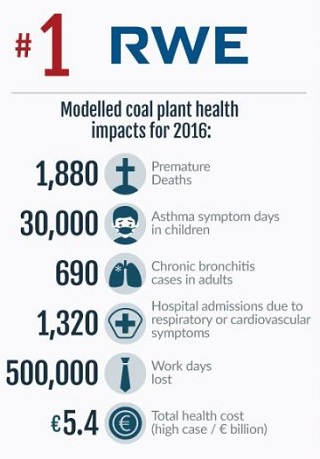Coal In Europe “On Terminal Decline”–But What About the Rate?

As is the case in the entire developed world coal is on its way out. The question, as always, is how much damage will be done in the process of getting there. The answer: no one knows.

As is the case in the entire developed world coal is on its way out. The question, as always, is how much damage will be done in the process of getting there. The answer: no one knows.
Craig,
As always you start with an assumption, then continue to fit supporting information to give your inaccurate assumption credibility to suit your agenda.
The report you claim is “extremely detailed on coal plants in Europe” is no more a selective mishmash of anti-coal propaganda and inaccurate misinformation, much of it long discredited, cobbled together by an enthusiastic young team of activists.
“Sandbag”, is the creation of leftist political activist and English language graduate, Bryony Worthington, who although being personally a charming individual has made a profession since leaving university as a professional political activist.
The demand for Coal is increasing globally. Unfortunately for Western Europe governments have neglected Coal technology while spending trillions on encouraging more politically fashionable alternate technologies to generate power.
Led by Germany, in the wake of Fukushima, West European nations also sought to abolish or reduce generation by Nuclear technology.
When power shortages caused by the limitations of renewable energy, and power costs soared the Europeans were forced to increase dependency on imports of gas and energy from Russia and other former USSR republics.
Despite everything, Germany, and other European (especially in the east) nations have been forced to re-commission old, moth-balled, inefficient power plants to meet demand. Germany and Poland have been forced to burn substandard brown coal from necessity.
This is the equivalent of re-introducing a mothballed worn out, old bus fleet manufactured in 1936 and claiming it represents the environmental technology employed by modern public transport!
Like all resource based industries, Coal needs certainty. While government policies are actively opposed to coal as part of the power mix, there will be no investment in developing and installing new Clean(er) technology, that’s become available and advancing rapidly in Asia and the rest of the world.
The US and Europe will be left behind, not because of a lack of expertise, but due to bad public policy and short sighted political infighting.
The result of this anti-coal fantasy is more harm to the environment and increasing damage to European and US national economies.
For Europe the answer lies not in continuing to shout anti-coal slogans, but investment in newly developed low emission, highly efficient, clean coal power stations. These new clean(er) generators can economically utilize high grade imported and local coal, rendering brown coal uneconomic.
The by-products of new coal technology can be employed to further reduce the emissions from other major pollution generating industries.
Sadly, due to the structure of European electoral systems, commonsense is in short supply while destructive activist rhetoric abounds, especially among the young.
German, and European, industry is already feeling the heavy burden of ever increasing energy costs making the economy less and and less competitive, in comparison to Asia.